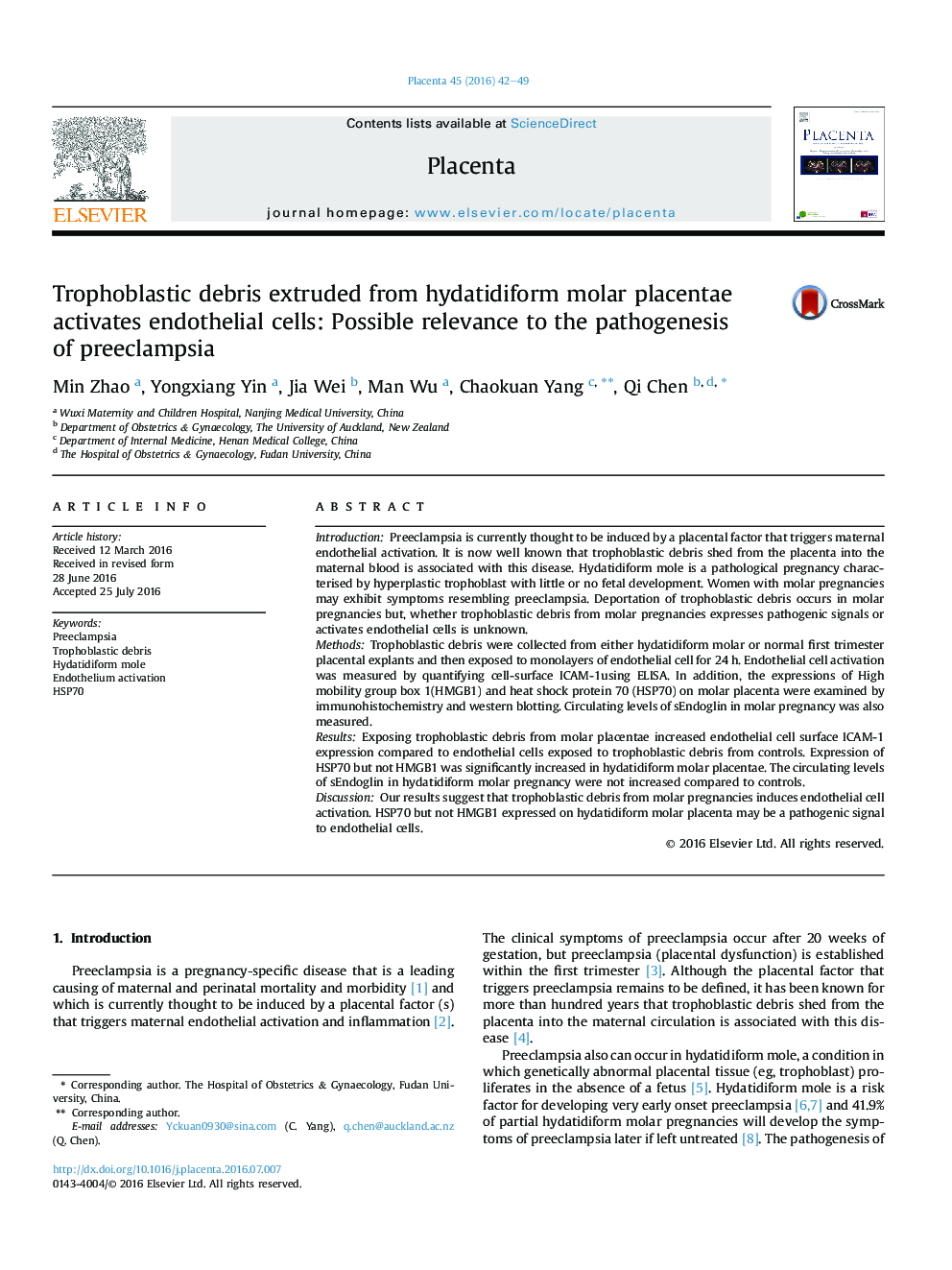| کد مقاله | کد نشریه | سال انتشار | مقاله انگلیسی | نسخه تمام متن |
|---|---|---|---|---|
| 2788274 | 1568563 | 2016 | 8 صفحه PDF | دانلود رایگان |
• Trophoblastic debris from hydatidiform molar placenta activated endothelial cell activation.
• Increased levels of HSP70 in hydatidiform molar placenta may be associated with this activation.
• Abnormal trophoblastic debris is associated with the pathogenesis of preeclampsia.
IntroductionPreeclampsia is currently thought to be induced by a placental factor that triggers maternal endothelial activation. It is now well known that trophoblastic debris shed from the placenta into the maternal blood is associated with this disease. Hydatidiform mole is a pathological pregnancy characterised by hyperplastic trophoblast with little or no fetal development. Women with molar pregnancies may exhibit symptoms resembling preeclampsia. Deportation of trophoblastic debris occurs in molar pregnancies but, whether trophoblastic debris from molar pregnancies expresses pathogenic signals or activates endothelial cells is unknown.MethodsTrophoblastic debris were collected from either hydatidiform molar or normal first trimester placental explants and then exposed to monolayers of endothelial cell for 24 h. Endothelial cell activation was measured by quantifying cell-surface ICAM-1using ELISA. In addition, the expressions of High mobility group box 1(HMGB1) and heat shock protein 70 (HSP70) on molar placenta were examined by immunohistochemistry and western blotting. Circulating levels of sEndoglin in molar pregnancy was also measured.ResultsExposing trophoblastic debris from molar placentae increased endothelial cell surface ICAM-1 expression compared to endothelial cells exposed to trophoblastic debris from controls. Expression of HSP70 but not HMGB1 was significantly increased in hydatidiform molar placentae. The circulating levels of sEndoglin in hydatidiform molar pregnancy were not increased compared to controls.DiscussionOur results suggest that trophoblastic debris from molar pregnancies induces endothelial cell activation. HSP70 but not HMGB1 expressed on hydatidiform molar placenta may be a pathogenic signal to endothelial cells.
Journal: Placenta - Volume 45, September 2016, Pages 42–49
